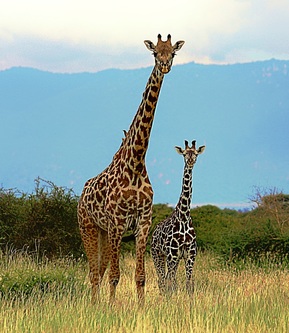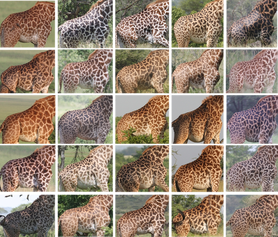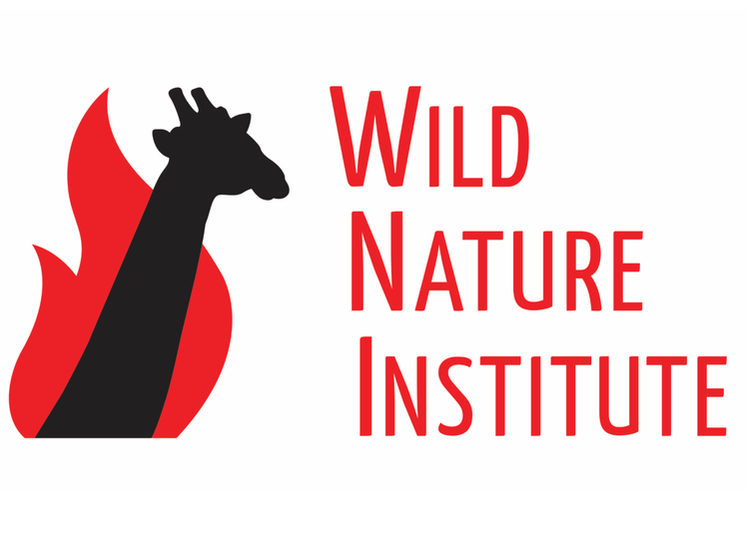The Masai Giraffe Project
Research, Education, and Action to Save Masai Giraffes

Masai giraffes live only in Tanzania and Kenya, and their numbers are falling fast. Habitat loss and illegal hunting are decimating giraffes, Masai giraffe numbers have declined over 50% in the last few decades! The IUCN Red List status for Masai giraffes is Endangered, with a decreasing population trend.
We use science, giraffe-themed environmental education, and grassroots advocacy to protect and connect areas important to Masai giraffe in Tanzania and around the world. We promote giraffe protection through our Giraffe-Themed Environmental Education and Children's Books, and we support anti-poaching activities to keep giraffes safe.
What you can do to help save giraffes.
- Donate Money or Time. Giving money and/or donating time to conservation groups like Wild Nature Institute is a great action to help giraffes. People can use their skills by providing advice, services, or goods in their personal area of expertise that can help the cause.
- Raise Awareness about the Silent Extinction of Giraffes. Speak up within your social circles, and encourage others to donate money or time to saving giraffes. You can raise awareness in your home communities by writing, speaking, and contributing to the global conversation about our planet’s climate and biodiversity crises.
- Plant Native Trees. Giraffes and many other species need native trees, but deforestation continues worldwide. Planting native trees helps fight the global climate crisis and helps biodiversity too!
- Support Legal Protections for Wildlife. Laws like the Endangered Species Act and other environmental laws make the world safer for wildlife and people. Call and write to your congressperson, senator, governor, and president telling them you support strong law enforcement to protect wildlife.
- Volunteer online to help measure giraffes at our Zooniverse project.
- We can craft a personal plan for you to become a giraffe hero. Email us at [email protected].

Our work at Wild Nature Institute helps giraffes and people to coexist.
Our giraffe research is discovering where Masai giraffes are doing well, where they are not, and why. Wild Nature Institute scientists are studying wild Masai giraffes in Tanzania using each animal’s unique fur pattern as identification.
We are monitoring thousands of individual giraffes throughout their lifetimes to document births, deaths, movements, and behavior. This is the world's biggest giraffe study and one of the biggest wildlife studies in history, covering the Tarangire and Serengeti Ecosystems (including Tarangire National Park, Lake Manyara National Park, Manyara Ranch Conservancy, Randilen Wildlife Management Area, and Burunge Wildlife Management Area, Serengeti National Park, Ngorongoro Conservation Area, and Arusha National Park).
Our giraffe research is urgently needed so we can provide effective conservation actions in an ever more fragmented world, and ensure the future of wild giraffes and all creatures of the savanna.
We are currently seeking new partners to join and expand our efforts to save the Masai giraffe. Please contact [email protected] to discuss how you or your organization can support this important work.
Our giraffe research is discovering where Masai giraffes are doing well, where they are not, and why. Wild Nature Institute scientists are studying wild Masai giraffes in Tanzania using each animal’s unique fur pattern as identification.
We are monitoring thousands of individual giraffes throughout their lifetimes to document births, deaths, movements, and behavior. This is the world's biggest giraffe study and one of the biggest wildlife studies in history, covering the Tarangire and Serengeti Ecosystems (including Tarangire National Park, Lake Manyara National Park, Manyara Ranch Conservancy, Randilen Wildlife Management Area, and Burunge Wildlife Management Area, Serengeti National Park, Ngorongoro Conservation Area, and Arusha National Park).
Our giraffe research is urgently needed so we can provide effective conservation actions in an ever more fragmented world, and ensure the future of wild giraffes and all creatures of the savanna.
We are currently seeking new partners to join and expand our efforts to save the Masai giraffe. Please contact [email protected] to discuss how you or your organization can support this important work.
Your tax-deductible donation or adoption of a baby giraffe will help to conserve giraffes for future generations.
A Video About Our Masai Giraffe Conservation Work
A Video About Our Giraffe Educational Materials
A Video About Tree Planting To Improve Giraffe Habitat
A Video Inspiring Tanzanians To Save Giraffes
Tuwatunza Twiga: Music for Giraffe Conservation
In 2018, Wild Nature Institute commissioned a local gospel choir to record the song Tuwatunze Twiga, which means “let’s protect giraffes.” The song describes how giraffes are beautiful and God tells people to conserve giraffes, but that giraffes are threatened by poaching. You can listen to the song by clicking the play button:
In 2018, Wild Nature Institute commissioned a local gospel choir to record the song Tuwatunze Twiga, which means “let’s protect giraffes.” The song describes how giraffes are beautiful and God tells people to conserve giraffes, but that giraffes are threatened by poaching. You can listen to the song by clicking the play button:
The song was played on a major radio station servicing the Tarangire-Manyara region, every day for the months of December (2018) and January (2019). To document community perceptions of giraffes and whether they were influenced by the Tuwatunza Twiga song, Wild Nature Institute administered short surveys of randomly selected community members before and after broadcast of the song. Experts in human dimensions of conservation at The Living Desert Zoo and Gardens helped us design the survey questionnaire and analyzed our survey data.
The report revealed some interesting information that will improve Wild Nature Institute’s giraffe conservation messaging in the future. In summary, the data showed:
The report revealed some interesting information that will improve Wild Nature Institute’s giraffe conservation messaging in the future. In summary, the data showed:
- Most people agreed giraffes are beautiful, and about 70% of community respondents understood that giraffes are threatened by poaching.
- Respondents were mostly supportive of people like park rangers who are working to protect natural resources, and believe they are doing a good job.
- 30% of respondents heard the Tuwatunze Twiga song.
- People who heard the song were significantly more likely to agree that God tells us that we should protect giraffes.
Our Scientific Publications on Giraffes:
M. L. Bond, B. König., A. Ozgul, D. R. Farine, D. E. Lee. 2021. "Socially defined subpopulations reveal demographic variation in a giraffe metapopulation." Journal of Wildlife Management. 85:920-931. doi.org/10.1002/jwmg.22044
M. L. Bond, D. E. Lee, D. R. Farine, A. Ozgul, B. König. 2021. "Sociability increases survival of adult female giraffes." Proceedings of the Royal Society B. doi.org/10.1098/rspb.2020.2770
M.L. Bond, B. König, D.E. Lee, A. Ozgul, D.R. Farine. 2021. "Proximity to humans affects local social structure in a giraffe metapopulation." Journal of Animal Ecology 90:212-221. doi.org/10.1111/1365-2656.13247
Z. Muller, D. E. Lee, C. P. J. Scheijen, K. D. Carter, M. Strauss, F. Deacon. 2020. "Giraffe translocations: A review and discussion of considerations." African Journal of Ecology doi.org/10.1111/aje.12727
D. E. Lee, E. Fienieg, C. Van Oosterhout, Z. Muller, M. Strauss, K. D. Carter, C. P. J. Scheijen, F. Deacon. 2020. "Giraffe translocation population viability analysis." Endangered Species Research DOI:10.3354/esr01022
M.L. Bond, D. E. Lee, A. Ozgul, & B. König. 2019. "Fission-fusion dynamics of a megaherbivore are driven by ecological, anthropogenic, temporal, and social factors." Oecologia. DOI:10.1007/s00442-019-04485-y.
D. Bolger, J. Ogutu, M. Strauss, D. Lee, A. Muneza, J. Fennessy, & D. Brown. 2019. "Giraffa camelopardalis ssp. tippelskirchi." The IUCN Red List of Threatened Species 2019: e.T88421036A88421121.
M. L. Bond & D. E. Lee. 2019. "Simultaneous multiple-calf allonursing by a wild Masai giraffe." African Journal of Ecology. DOI:10.1111/aje.12673.
M. A. Knüsel, D .E. Lee, B. König, M. L. Bond. 2019. "Correlates of home range sizes of giraffes, Giraffa camelopardalis." Animal Behaviour 149:143-151. DOI:10.1016/j.anbehav.2019.01.017.
P. Buehler, B. Carroll, A. Bhatia, V. Gupta, D. E. Lee. 2019. "An automated program to find animals and crop photographs for individual recognition." Ecological Informatics 50:191-196. DOI: 10.1016/j.ecoinf.2019.02.003.
D. E. Lee, D. R. Cavener & M. L. Bond. 2018. "Seeing spots: quantifying mother-offspring similarity and assessing fitness consequences of coat pattern traits in a wild population of giraffes (Giraffa camelopardalis)." PeerJ 6:e5690 https://doi.org/10.7717/peerj.5690.
D. E. Lee. 2018. "Evaluating Conservation Effectiveness in a Tanzanian Community Wildlife Management Area." Journal of Wildlife Management DOI: 10.1002/jwmg.21549.
D.E. Lee & M.L. Bond. 2018. "Quantifying the ecological success of a community-based wildlife conservation area in Tanzania." Journal of Mammalogy DOI:10.1093/jmammal/gyy014.
D.E. Lee & D.T. Bolger. 2017. "Movements and source-sink dynamics among subpopulations of giraffe." Population Ecology DOI 10.1007/s10144-017-0580-7.
F.B. Bercovitch, P.S. Berry, A. Dagg, F. Deacon, J.B. Doherty, D.E. Lee, F. Mineur, Z. Muller, R. Ogden, R. Seymour & B. Shorrocks. 2017. "How many species of giraffe are there?" Current Biology 27:R136-R137.
D.E. Lee, M.L. Bond & D.T. Bolger. 2017. "Season of birth affects juvenile survival of giraffe." Population Ecology. DOI 10.1007/s10144-017-0571-8
Z. Muller, F. Bercovitch, J. Fennessy, D. Brown, R. Brand, M. Brown, D. Bolger, K. Carter, F. Deacon, J. Doherty, S. Fennessy, A.A. Hussein, D. Lee, A. Marais, M. Strauss, A. Tutchings & T. Wube. 2016. "Giraffa camelopardalis." The IUCN Red List of Threatened Species 2016: e.T9194A51140239.
D.E. Lee, B.M. Kissui, Y.A. Kiwango & M.L. Bond. 2016. "Migratory herds of wildebeest and zebra indirectly affect juvenile survival of giraffes." Ecology and Evolution DOI: 10.1002/ece3.2561.
D.E. Lee & M.K.L. Strauss. 2016. "Giraffe demography and population ecology." Reference Module in Earth Sciences and Environmental Studies. DOI: 10.1016/B978-0-12-409548-9.09721-9.
D.E. Lee, M.L. Bond, B.M. Kissui, Y.A. Kiwango & D.T. Bolger. 2016. "Spatial variation in giraffe demography: a test of 2 paradigms." Journal of Mammalogy 79:1015-1025.
D.E. Lee & M.L. Bond. 2016. "Precision, accuracy, and costs of survey methods for giraffe Giraffa camelopardalis." Journal of Mammalogy 79:940-948.
D.E. Lee & M.L. Bond. 2016. "The occurrence and prevalence of giraffe skin disease in protected areas of northern Tanzania." Journal of Wildlife Diseases 52:753-755.
M.L. Bond, M.K.L. Strauss & D.E. Lee. 2016. "Soil correlates and mortality of giraffe skin disease in northern Tanzania." Journal of Wildlife Diseases DOI:10.7589/2016-02-047.
D.T. Bolger, J.O. Ogutu, M. Strauss, D.E. Lee, J. Fennessy, D. Brown. 2015. “Masai giraffe (Giraffa camelopardalis tippelskirchi) conservation status report.” IUCN/SSC Giraffe and Okapi Specialist Group.
D.E. Lee. 2015. "Demography of giraffe in the fragmented Tarangire ecosystem." PhD Dissertation. Dartmouth College.
M. L. Bond, B. König., A. Ozgul, D. R. Farine, D. E. Lee. 2021. "Socially defined subpopulations reveal demographic variation in a giraffe metapopulation." Journal of Wildlife Management. 85:920-931. doi.org/10.1002/jwmg.22044
M. L. Bond, D. E. Lee, D. R. Farine, A. Ozgul, B. König. 2021. "Sociability increases survival of adult female giraffes." Proceedings of the Royal Society B. doi.org/10.1098/rspb.2020.2770
M.L. Bond, B. König, D.E. Lee, A. Ozgul, D.R. Farine. 2021. "Proximity to humans affects local social structure in a giraffe metapopulation." Journal of Animal Ecology 90:212-221. doi.org/10.1111/1365-2656.13247
Z. Muller, D. E. Lee, C. P. J. Scheijen, K. D. Carter, M. Strauss, F. Deacon. 2020. "Giraffe translocations: A review and discussion of considerations." African Journal of Ecology doi.org/10.1111/aje.12727
D. E. Lee, E. Fienieg, C. Van Oosterhout, Z. Muller, M. Strauss, K. D. Carter, C. P. J. Scheijen, F. Deacon. 2020. "Giraffe translocation population viability analysis." Endangered Species Research DOI:10.3354/esr01022
M.L. Bond, D. E. Lee, A. Ozgul, & B. König. 2019. "Fission-fusion dynamics of a megaherbivore are driven by ecological, anthropogenic, temporal, and social factors." Oecologia. DOI:10.1007/s00442-019-04485-y.
D. Bolger, J. Ogutu, M. Strauss, D. Lee, A. Muneza, J. Fennessy, & D. Brown. 2019. "Giraffa camelopardalis ssp. tippelskirchi." The IUCN Red List of Threatened Species 2019: e.T88421036A88421121.
M. L. Bond & D. E. Lee. 2019. "Simultaneous multiple-calf allonursing by a wild Masai giraffe." African Journal of Ecology. DOI:10.1111/aje.12673.
M. A. Knüsel, D .E. Lee, B. König, M. L. Bond. 2019. "Correlates of home range sizes of giraffes, Giraffa camelopardalis." Animal Behaviour 149:143-151. DOI:10.1016/j.anbehav.2019.01.017.
P. Buehler, B. Carroll, A. Bhatia, V. Gupta, D. E. Lee. 2019. "An automated program to find animals and crop photographs for individual recognition." Ecological Informatics 50:191-196. DOI: 10.1016/j.ecoinf.2019.02.003.
D. E. Lee, D. R. Cavener & M. L. Bond. 2018. "Seeing spots: quantifying mother-offspring similarity and assessing fitness consequences of coat pattern traits in a wild population of giraffes (Giraffa camelopardalis)." PeerJ 6:e5690 https://doi.org/10.7717/peerj.5690.
D. E. Lee. 2018. "Evaluating Conservation Effectiveness in a Tanzanian Community Wildlife Management Area." Journal of Wildlife Management DOI: 10.1002/jwmg.21549.
D.E. Lee & M.L. Bond. 2018. "Quantifying the ecological success of a community-based wildlife conservation area in Tanzania." Journal of Mammalogy DOI:10.1093/jmammal/gyy014.
D.E. Lee & D.T. Bolger. 2017. "Movements and source-sink dynamics among subpopulations of giraffe." Population Ecology DOI 10.1007/s10144-017-0580-7.
F.B. Bercovitch, P.S. Berry, A. Dagg, F. Deacon, J.B. Doherty, D.E. Lee, F. Mineur, Z. Muller, R. Ogden, R. Seymour & B. Shorrocks. 2017. "How many species of giraffe are there?" Current Biology 27:R136-R137.
D.E. Lee, M.L. Bond & D.T. Bolger. 2017. "Season of birth affects juvenile survival of giraffe." Population Ecology. DOI 10.1007/s10144-017-0571-8
Z. Muller, F. Bercovitch, J. Fennessy, D. Brown, R. Brand, M. Brown, D. Bolger, K. Carter, F. Deacon, J. Doherty, S. Fennessy, A.A. Hussein, D. Lee, A. Marais, M. Strauss, A. Tutchings & T. Wube. 2016. "Giraffa camelopardalis." The IUCN Red List of Threatened Species 2016: e.T9194A51140239.
D.E. Lee, B.M. Kissui, Y.A. Kiwango & M.L. Bond. 2016. "Migratory herds of wildebeest and zebra indirectly affect juvenile survival of giraffes." Ecology and Evolution DOI: 10.1002/ece3.2561.
D.E. Lee & M.K.L. Strauss. 2016. "Giraffe demography and population ecology." Reference Module in Earth Sciences and Environmental Studies. DOI: 10.1016/B978-0-12-409548-9.09721-9.
D.E. Lee, M.L. Bond, B.M. Kissui, Y.A. Kiwango & D.T. Bolger. 2016. "Spatial variation in giraffe demography: a test of 2 paradigms." Journal of Mammalogy 79:1015-1025.
D.E. Lee & M.L. Bond. 2016. "Precision, accuracy, and costs of survey methods for giraffe Giraffa camelopardalis." Journal of Mammalogy 79:940-948.
D.E. Lee & M.L. Bond. 2016. "The occurrence and prevalence of giraffe skin disease in protected areas of northern Tanzania." Journal of Wildlife Diseases 52:753-755.
M.L. Bond, M.K.L. Strauss & D.E. Lee. 2016. "Soil correlates and mortality of giraffe skin disease in northern Tanzania." Journal of Wildlife Diseases DOI:10.7589/2016-02-047.
D.T. Bolger, J.O. Ogutu, M. Strauss, D.E. Lee, J. Fennessy, D. Brown. 2015. “Masai giraffe (Giraffa camelopardalis tippelskirchi) conservation status report.” IUCN/SSC Giraffe and Okapi Specialist Group.
D.E. Lee. 2015. "Demography of giraffe in the fragmented Tarangire ecosystem." PhD Dissertation. Dartmouth College.
|
Mailing Address:
Wild Nature Institute PO Box 44 Weaverville, NC 28787 Phone: +1 415 763 0348 Email: [email protected] |
|
The Wild Nature Institute is a New Hampshire non-profit corporation and a 501(c)3 tax-exempt organization.
© Copyright 2010. All Rights Reserved.

